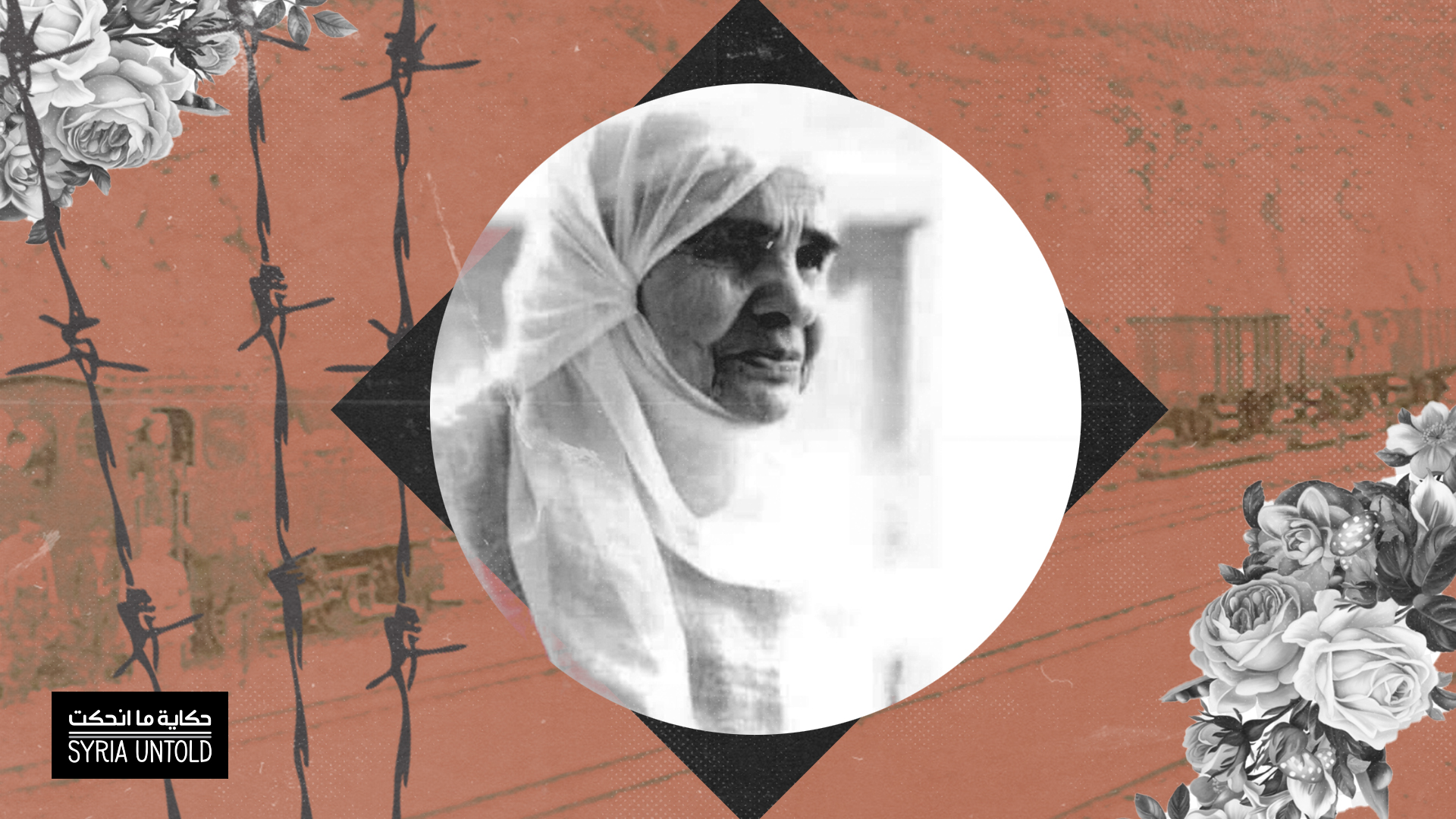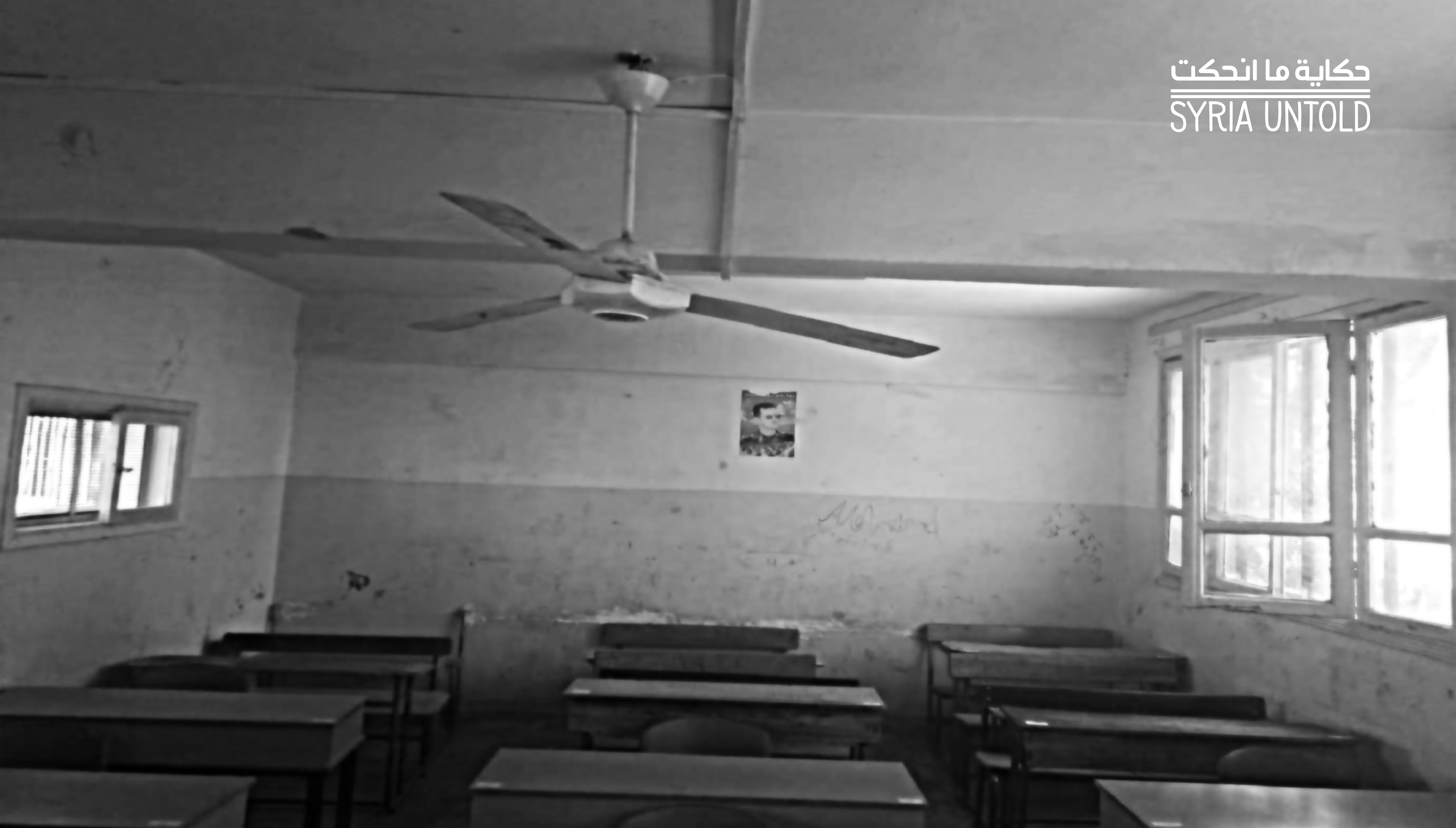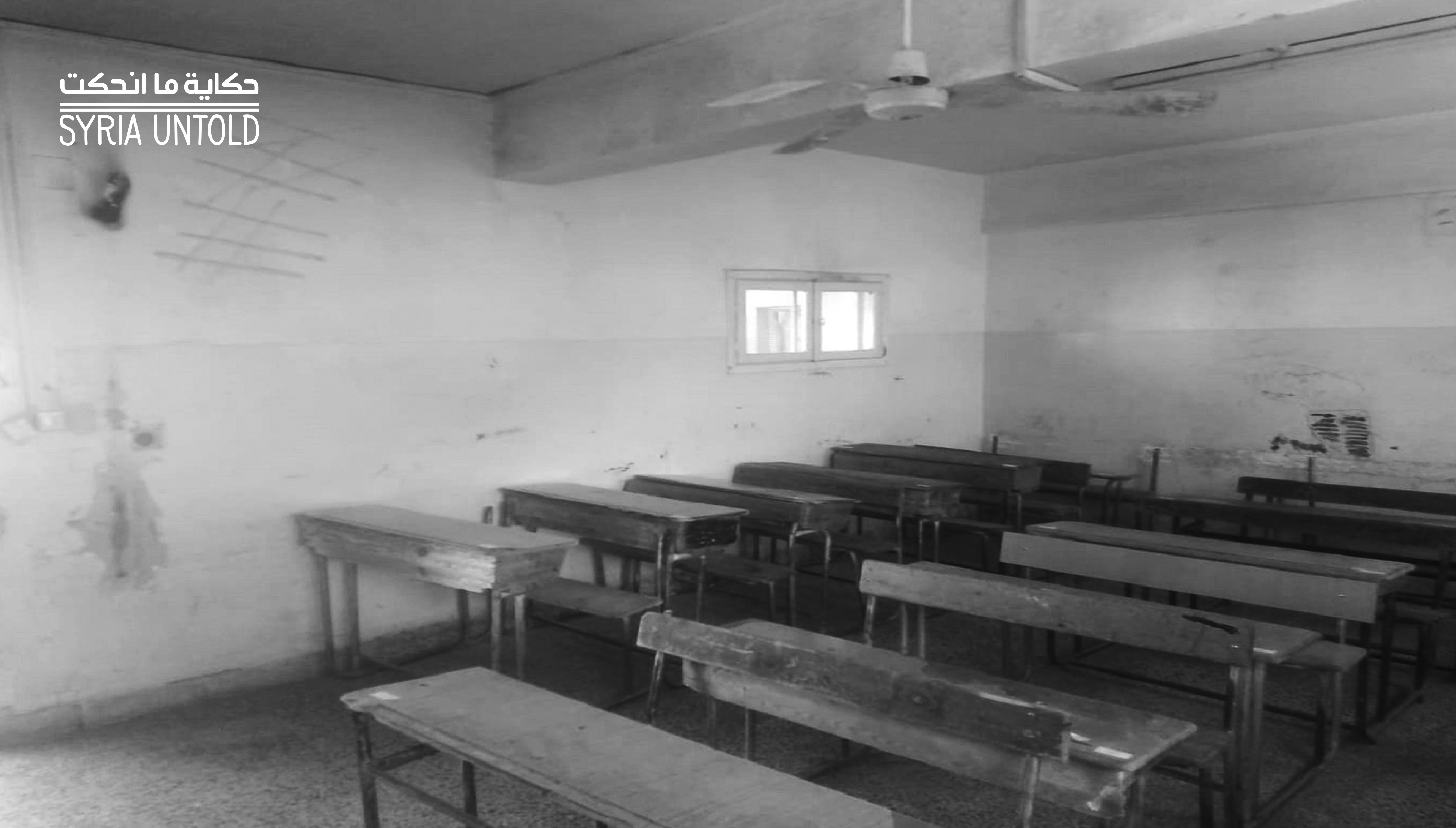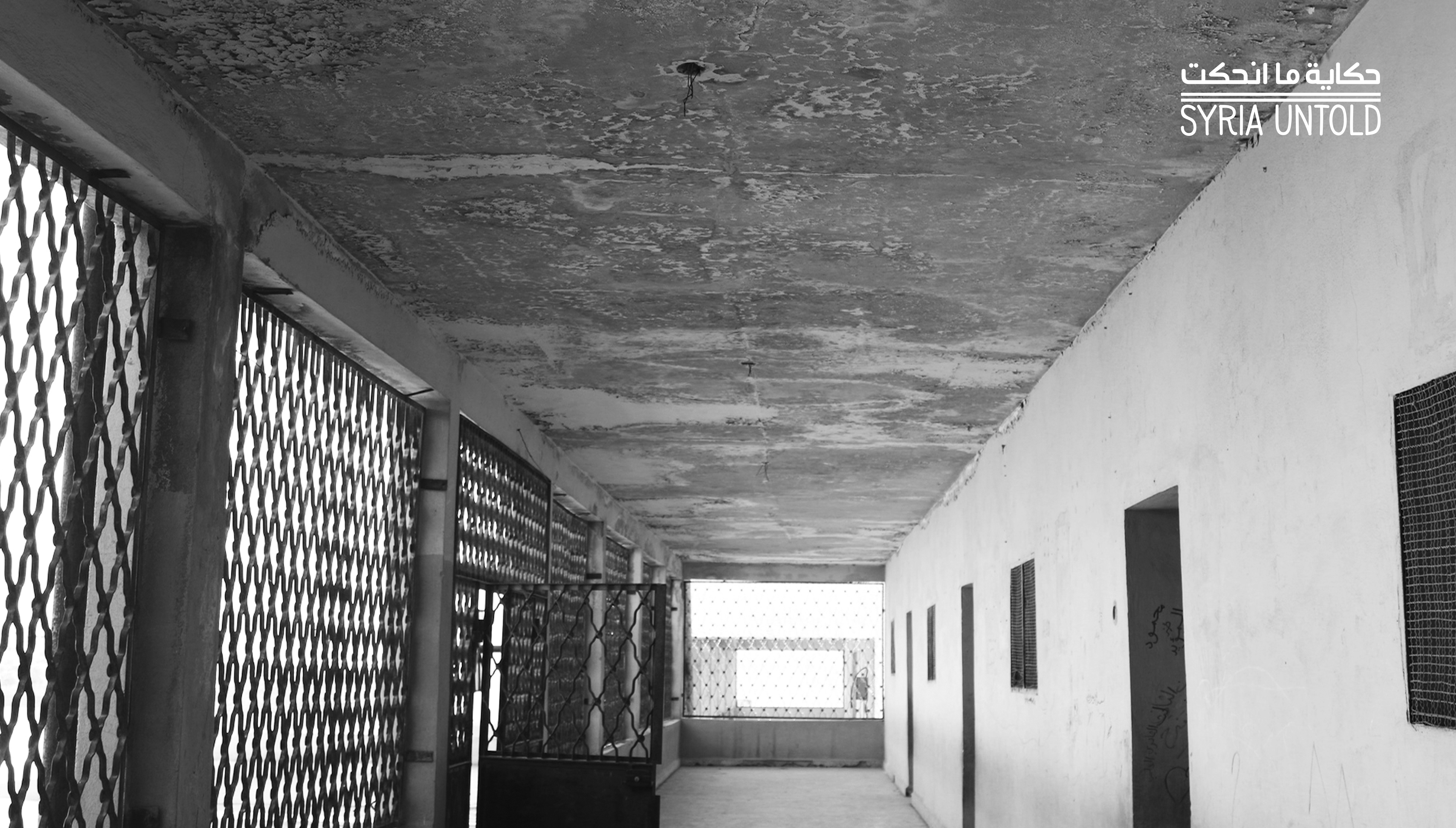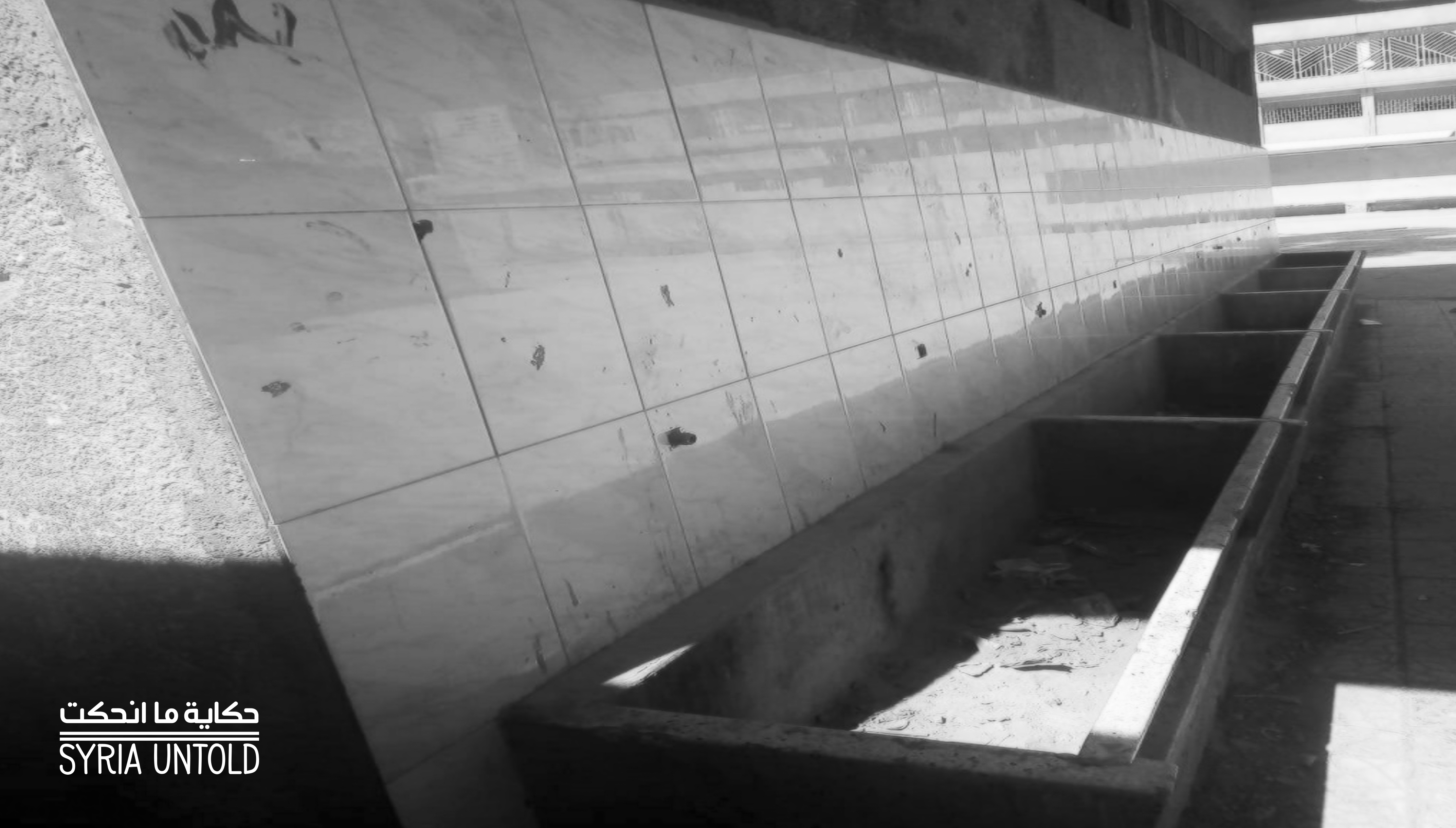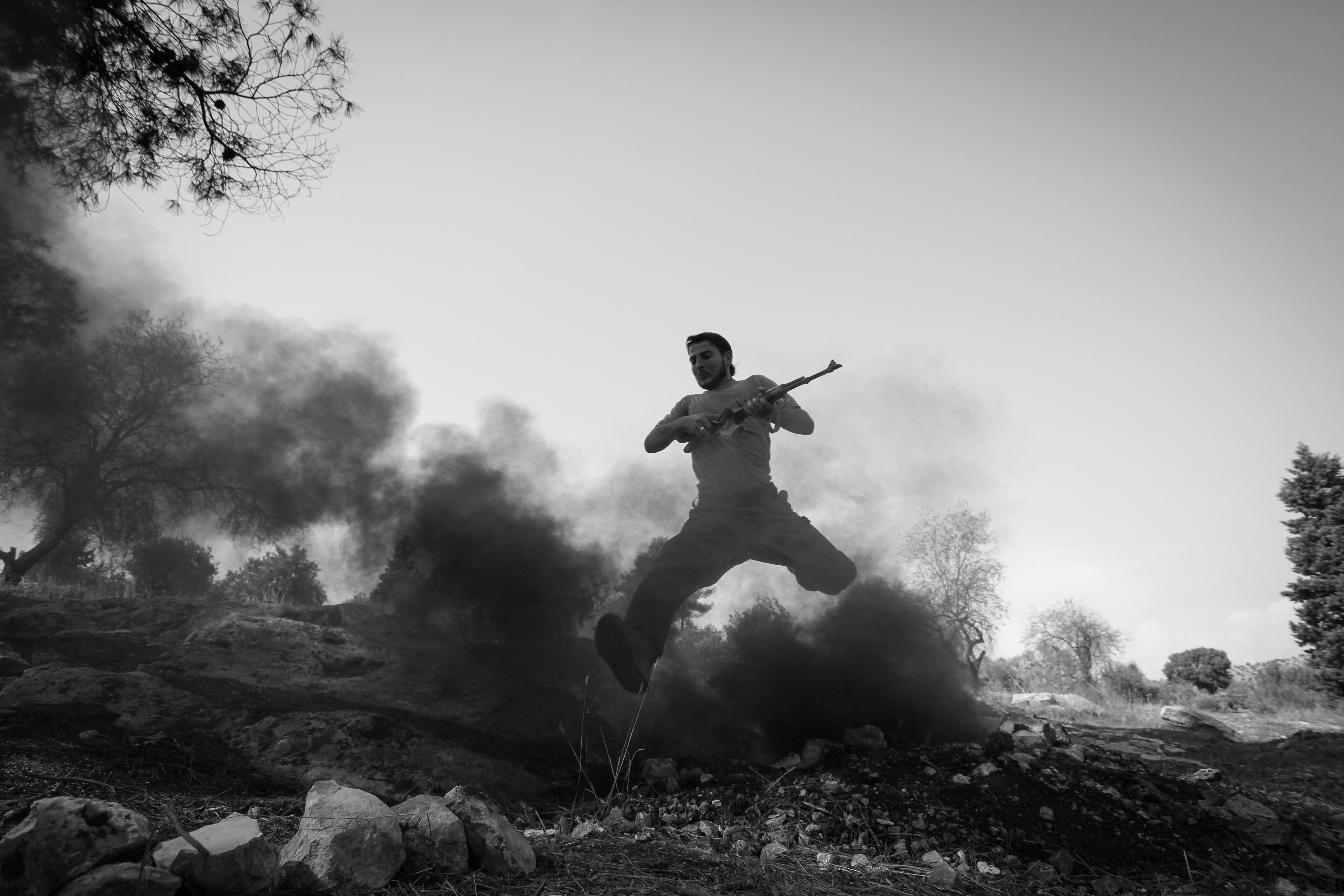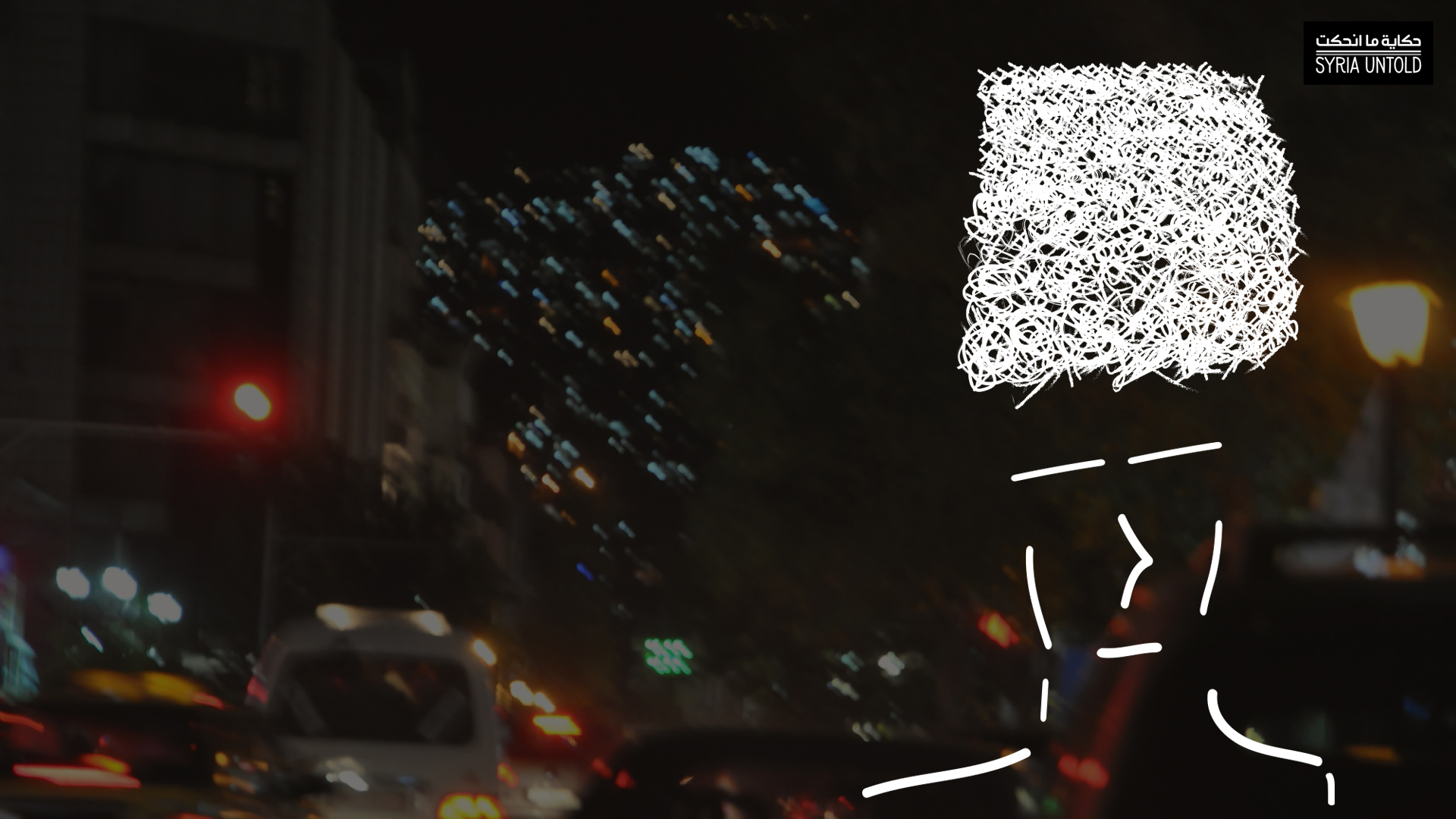SyriaUntold originally published this article in Arabic here.
Schools in Syria are like prisons. They have high walls and bars over their windows, and male and female teachers alike beat their students with sticks of all sizes, colors and shapes. Military trainers not unlike army officers used to hand out military-style punishments.
After the start of the so-called “development and modernization process” and Bashar al-Assad's ascent to the presidency in the early 2000s, those military trainers were replaced by teachers. Like their predecessors, they kept constant surveillance over students and had an obsession with discipline. Most of them were former army officers or volunteers in the security services and mukhabarat. Their mission remained largely the same—only their titles changed.
The violence that takes place within these schools, in addition to other factors related to social conditions and the relationship of schools to the regime, pushes many students to drop out at various stages. What is behind this educational failure?
Sultana’s story
10 July 2021
The forgotten railways of Syria and Lebanon: Tales of a missed connection
29 October 2021
Memories of school in Syria
The scenes of violence I witnessed over more than a decade attending Syrian schools, from the earliest grades through secondary school, are too many to count.
In the last year of primary school, when my classmates and I were in sixth grade at the tender age of 11 or 12, I attended the Mohieddine bin Arabi School in the Rukn al-Din neighborhood of Damascus. One of the teachers used to beat both the boys and the girls. She once brutally hit a boy in my class then kicked him. Then she folded the boy’s arm behind his back and forced him to lean back against her knee, breaking his arm. He came back to school the next day with his arm wrapped in a cast, and was forced to apologize to the teacher.
Later on, in eighth grade, for some reason the students took on the habit of burning their textbooks after finishing their courses. So the school guide—he’s the one who performs certain logistical tasks for the classes—left school one day thinking that the students would be afraid of him and stop burning their books. After all, he was famous for being violent and hitting anyone in his way with whatever he happened to be carrying.
So he exited the main door and stood waiting in the middle of the schoolyard, which faces the outer gate. Something of a rebellion began. The students started throwing their books at him and it was like a scene out of a film: him, there, in the middle of the schoolyard with books hitting him from all sides. Early the next morning, he entered each classroom one by one, calling out two or three names from each. It seemed that his spies among the students had given him the names of those who had participated in the previous day’s book-tossing campaign. Two students’ names were called in my class. He started beating them and cursing their mothers in front of our teacher, who, frightened, hid her face behind a book. He then kicked the two students out of the classroom and when they returned a little while later, they were covered in blood. They weren’t allowed to wash it off.
Experiences like this made us hate school. We hated the teachers and had no desire to attend lessons, which weren’t really aimed at educating us anyway. Our sole task was to memorize whatever we were taught so that we could pass the exams and make it to the next year.
This hatred, this lack of any feelings of belonging to the place, this lack of any excitement for a better future, pushed many students (myself included) to skip classes. After leaving home in the morning and saying goodbye to our families, we’d meet up with our friends near the school building. From there, we’d simply go someplace else.
In middle school, I remember us escaping school to go swimming or play football, and in secondary school I hardly knew the teachers of some subjects. We’d go to one of our friends’ houses to watch films or read books that were outside the school curriculum. Sometimes we’d meet up at the famous al-Kamal Coffeehouse in the middle of Damascus to smoke argileh and play cards.
School design and the Syrian regime
Schools in Syria, like other government buildings, are designed to be ugly. They’re large, to accommodate many students. These humongous buildings are an earthy brown color on the outside and are usually decorated with slogans glorifying the dictator Hafez al-Assad, or quotes he’s said, or drawings of him and his children, including Bassel al-Assad, who died in a car crash in 1994, and Bashar, who would later inherit power from his father.
I remember there were usually two main doors—one opening directly onto the street for the teachers and administrators, and another that opened into the courtyard surrounding the school building. That’s where the students would meet up in the morning, during the breaks between lessons and for gym class.
Like in prisons, this courtyard is surrounded by an external wall. The building is linked to the outside world through a big iron gate, which opens just once in the early morning to receive students and again at the end of the school day so the children can leave.
The school building, which is usually three or four floors high, is split up into rooms, each of which is called a “division” (or “shaabeh” in Arabic). This bears similarity to the “divisions” of the Arab Socialist Baath Party, which has been the dominant party in Syrian political life since the 1960s.
Each “division” in the school has about 40-55 students sitting three kids per desk. The teacher never talks directly to any one girl or boy during lessons, as the sheer number of children in each room makes them unable to devote one-on-one time to the students.
In the morning gatherings, and before the start of lessons, the students stand at attention in orderly lines, one row for each “division.” The children then recite the morning chants, national anthems, praises for the Baath Party and salutations glorifying the President of the Republic, such as: “One Arab nation/with an eternal message/Our goals: Unity, Liberty, Socialism/Our leader for all eternity is al-Amin Hafez al-Assad.” Or one of the teachers recites: “My comrade the vanguard, be prepared to build a unified Arab society and to defend it.” Then the students must respond by raising their right hands in little Nazi salutes: “I am always ready!”
Of course, the schools are divided by gender. After primary school, which is mixed, the boys continue their studies in all-boys schools, and girls go to the girls' schools, with the exception of the elite schools (each big city in Syria has one) and some private and foreign academies. But only the very wealthy can afford monthly tuition for the latter.
Through the design of these school buildings, the teaching methods, the constant violence and the slogans that children must repeat every day from the time they turn six until they graduate at age 18, the system brainwashes students. The goal: to make these children into the next generation of the Baathist state, and to continue the circle of violence and dictatorial authority. This makes it easier to control society, through sowing constant fear of the leader and of the regime and installing the leader’s image everywhere, constantly watching everyone like Big Brother in 1984.
In his film A Flood in Baath Country, Syrian film director Omar Amiralay shows the Syrian condition and the authority of the Baath regime, headed by Hafez al-Assad and afterward his son Bashar, through the details of society—including the Baath Party’s control of schools. Amiralay managed to view this society through a microscopic lens, examining a school in a small Syrian village. It is little surprise that most of Amiralay’s films were banned from screening in his home country.
Social conditions in Syria, and ‘escaping’ school
Dr. Mustafa Hejazi writes about so-called “backward” societies in his book Social Underdevelopment: An Introduction to the Sociology of the Oppressed Person. In an attempt to understand the violence that he describes as “the scourge of society,” Hejazi explains: “The authority knows no other method of addressing [society] than terror and oppression, subjugation with no limits, making way for dishonesty. The reactions of this authority are violent and direct and take on a material character. The social structure underpinning this situation is frozen and rigid, and does not include any safety valves.”
Hejazi adds later that “the relationship of oppression with all the suppression, terror and deception it holds, leaves in its wake a very special situation, one that generates violence in all its forms.”
The relationship between regenerative violence and oppression at all levels of Syrian society, he argues, leads to a constant feeling of persecution among members of that society. Hejazi refers to this feeling as “the psychological-relational dimension of aggression.” According to Hejazi, this dimension “is active in two directions: pouring aggression onto others and harming them, or falling victim to aggression and deception.”
Perhaps this theory explains the relationship of the violence perpetrated against Syrian children at home, in schools and in all circles of society with the process of “escape” practiced and perfected by all Syrians. From birth, and then in early childhood, children escape from home, afraid of the violence of their parents. Then, as students, they escape the violence and oppression of their teachers. Later on, as adults, men flee compulsory military service for fear of the officers, and women flee the domestic violence of their husbands. Female and male employees alike flee the oppression of their bosses, and in the end, everyone flees security agents, who in turn fear their highest-ranking officers, reaching the very top of the pyramid of authority. Writer and researcher Jad al-Karim al-Jabai writes in his book Modernity Without Limits in Individual Freedom: “In our country, a person is still either a hammer or an anvil.”
This relationship of dependency is based mainly on violence and fear. The educational institution—schools, universities and learning institutes—work to perpetuate and regenerate this violence in an unending circle, so that those abused by violence themselves become violent.
In his famous book Human Life, Syrian poet and writer Mamdouh Adwan explains: “Repressive and repressed societies generate a dictator in the soul of each of their members. In turn, every member of such societies, no matter how persecuted they may be, is prepared in advance to practice that same oppression against those who fall under their authority, perhaps with even more violence and brutality.”



